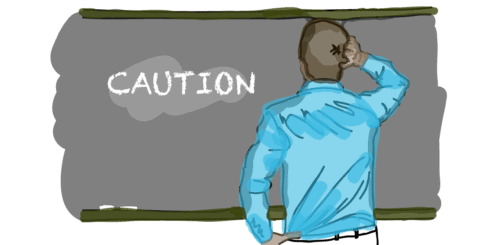Freedom of expression is a much-debated topic on university campuses. Continually we’re forced to ask, “Where do we draw the line between protecting students’ safety and protecting students’ right to free academic discussion?”
Ultimately, I believe that the usage of trigger warnings and safe spaces only increases our freedom of expression and ability to have discussions because they allow for all students to participate in academic discourse without risking their own safety or well-being.
This past August, as first-year students at the University of Chicago awaited the start of a new term, they received a letter from their university.
In the letter, John Ellison, dean of students at the college, wrote that UChicago has a “commitment to freedom of inquiry and expression.” As a result of this commitment, the school “[does] not support so-called ‘trigger warnings.’” Furthermore, “[they] do not condone the creation of intellectual ‘safe spaces’ where  individuals can retreat from ideas and perspectives at odds with their own.”
individuals can retreat from ideas and perspectives at odds with their own.”
Essentially, UChicago believes in protecting freedom of expression. However, it doesn’t seem to believe in protecting the safety of all of its students.
Trigger warnings are essentially notifications given at the beginning of a piece of media, or the beginning of a course or reading, outlining content that may be difficult or traumatic for some people to be exposed to.
This is usually for things like sexual assault, violence, substance abuse or racist content. Safe spaces are places where students can go to either be free from triggering content or to receive support around areas of difficulty and trauma.
Both of these concepts are intended to protect the safety of students that have experienced trauma and to allow them to make informed decisions about the things they are exposed to. Although the term “trigger” has been used repeatedly out of context, the value of trigger warnings for those that need them isn’t diminished.
Nowhere does the usage of a trigger warning imply that content will be censored. By placing a warning at the start of a course or reading, we’re simply giving students more information about what they are getting into.
When UChicago uses the phrase “individuals can retreat from ideas and perspectives at odds with their own,” they make it seem like everyone is just avoiding topics because they disagree with them. However, for people who have been through some kind of trauma, being exposed to triggering content can do real harm, often causing panic attacks or setting them back in terms of recovery.
If anything, trigger warnings and safe spaces increase freedom of expression, because they allow for sensitive individuals to prepare themselves for difficult topics, rather than simply avoid them or be retraumatized. When students know the kinds of things that will be discussed in a course, they can seek out the supports — the kind that safe spaces provide — they need to participate in discussion.
I absolutely agree with UChicago’s goal to create a place where students are “encouraged to speak, write, listen, challenge and learn, without fear of censorship.” I agree with their promotion of diversity, debate and discussion.
What I don’t agree with is the idea that those values are any good if you can’t give them to every single student, including those that may suffer trauma or violence when exposed to certain content without warning.
UChicago may want to make its campus more like the “real world,” but I’d rather work to make the world more like some university campuses: sensitive, inclusive and committed to protecting the safety of all.
—
Emily Klatt
Graphic: Lesia Karalash / Graphics Editor